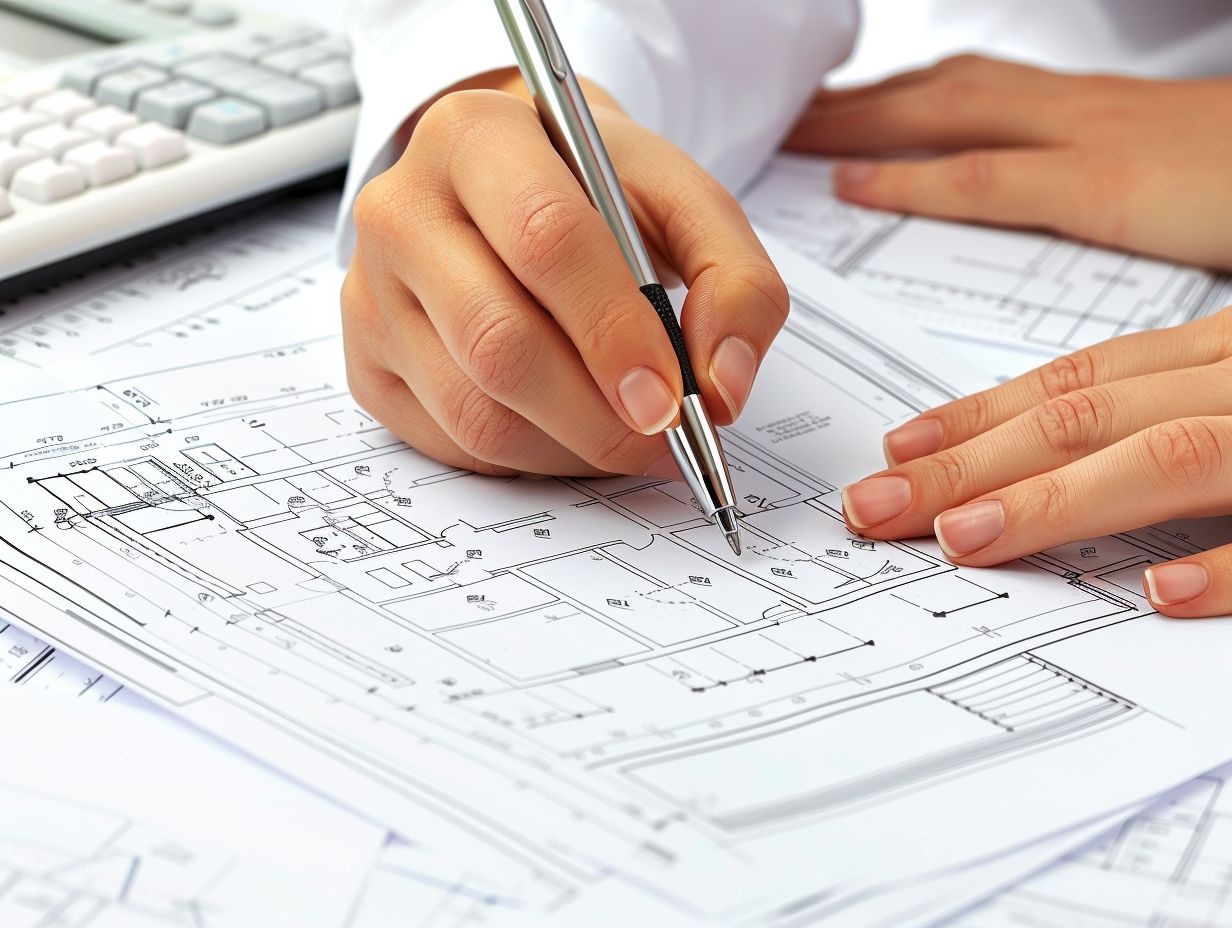
Expert Engineering Tips for Successful Home Additions in SF
Home additions have become increasingly popular in San Francisco as homeowners seek to expand their living space without the hassle of moving. Whether it’s adding a new room, a second story, or a sunroom, these additions offer a range of benefits, from increased property value to the flexibility of customization.
Planning a successful home addition in the bustling city requires careful consideration of various factors, from budgeting and zoning regulations to the hiring of reputable contractors. In this comprehensive guide, we’ll delve into the different types of home additions, the essential steps for planning, common mistakes to avoid, and the advantageous aspects of undertaking a home addition project in San Francisco.
Whether you’re a homeowner looking to expand your living space or a contractor seeking expert engineering tips, this article will provide valuable insights to ensure a successful home addition project in SF.
What Are Home Additions?
Home additions refer to the process of expanding or enhancing an existing residential property through structural modifications or new construction.
Such modifications can take various forms, including adding new rooms, extending existing rooms, constructing additional floors, or building standalone structures like guest houses or garages. Home additions can offer numerous benefits, such as increasing living space, improving functionality, and boosting property value.
It is essential to consider factors such as architectural coherence, structural integrity, zoning regulations, and budget constraints before embarking on a home addition project. Engaging professionals in architecture, construction, and engineering can ensure a successful and harmonious integration of the new addition with the existing home.
Why Are Home Additions Popular in San Francisco?
Home additions have gained popularity in San Francisco due to the region’s focus on property value enhancement, flexible zoning regulations, and compliance with local construction standards.
Property value enhancement is a key driving factor for homeowners in San Francisco, where the real estate market is known for its competitive nature. By adding extra living space or upgrading existing areas, homeowners can significantly increase the value of their properties. Accommodating zoning regulations in San Francisco provide homeowners with more flexibility in expanding their homes, allowing for seamless integration of additional space. This, combined with stringent adherence to local construction standards, ensures that new additions blend seamlessly into the existing architectural landscape of the city.
What Are The Different Types of Home Additions?
Various types of home additions include:
- Room additions, ideal for expanding living space without major structural changes.
- Second-story extensions, providing vertical expansion opportunities.
- Bump-out expansions, suitable for creating small extensions to existing rooms.
- Sunroom enhancements, offering a tranquil retreat with ample natural light.
The construction requirements vary for each type, with room additions and second-story extensions typically requiring more extensive permits and structural considerations. Understanding the unique features and suitability of each type can help homeowners make informed decisions for enhancing their living spaces.”
Room Addition
A room addition is a significant construction project that involves expanding the footprint of a home to create additional living space, requiring meticulous design, quality materials, and precise construction execution.
It’s essential to carefully consider the design of the new room addition to seamlessly integrate it with the existing structure, ensuring a cohesive and aesthetically pleasing look. When it comes to material selection, choosing durable and high-quality materials is crucial to ensure longevity and functionality.
The construction process for a room addition involves various stages, including:
- Site preparation
- Framing
- Roofing
- Electrical and plumbing installation
- Finishing touches
All of which require skilled craftsmanship and attention to detail to bring the project to completion.
Second Story Addition
A second-story addition involves building a new level above the existing structure, necessitating careful evaluation of foundation integrity, framing modifications, and roofing integration to ensure structural and architectural harmony.
This type of expansion requires a thorough assessment of the existing foundation to ensure it can support the added weight of the new level. Framing considerations must be taken into account to ensure that the new structure aligns seamlessly with the existing one.
Roofing requirements are crucial to maintain the aesthetic appeal of the property while also providing adequate protection against the elements. Addressing these complexities ensures a successful second-story addition that enhances both the structural integrity and overall design of the property.
Bump-out Addition
A bump-out addition extends the footprint of a home by expanding a specific area, necessitating careful attention to plumbing, electrical, and HVAC systems to seamlessly integrate the new space with existing utilities.
This type of expansion requires an assessment of the current plumbing layout, as adjustments may be necessary to facilitate the extension. With electrical considerations, additional outlets and lighting fixtures may need to be incorporated to accommodate the expanded space. The HVAC system also needs to be evaluated to ensure proper heating and cooling for the new area.
Proper planning and coordination with skilled professionals are vital to ensure that the integration of these systems align with the overall design and functionality of the bump-out addition.
Sunroom Addition
A sunroom addition provides a versatile and light-filled space, requiring meticulous attention to insulation, window placement, and door integration to maximize energy efficiency and aesthetic appeal.
The insulation for a sunroom addition is crucial to regulate temperature and ensure year-round comfort. High-performance windows with low-E coatings and insulated frames can control heat gain and loss, while also allowing abundant natural light.
When selecting doors for a sunroom, consider energy-efficient options such as weather-stripped, double-paned varieties. Integrating energy-efficient features like solar shades or ceiling fans can further enhance the sunroom’s comfort and reduce energy consumption.
What Are The Steps To Successfully Plan A Home Addition In SF?
Successfully planning a home addition in San Francisco involves strategic project management, thorough permitting processes, and meticulous budgeting to ensure a smooth and compliant construction journey.
Project management plays a crucial role in orchestrating the various elements of a home addition, including coordinating contractors, scheduling deliveries, and overseeing the timeline. Understanding the permitting considerations specific to San Francisco, such as zoning regulations and building codes, is essential to avoid costly delays.
Creating a detailed budget that factors in materials, labor costs, unforeseen expenses, and contingency funds is vital for managing the financial aspects of the project effectively.”
Determine Your Budget
The first step in planning a home addition is to determine a realistic budget, involving collaboration with contractors and material suppliers to assess the financial scope of the project.
This collaborative approach helps in gaining insights into the cost of materials and labor, allowing for a more accurate estimation. Contractors play a crucial role in providing quotes and guiding on cost-effective solutions.
Conducting a thorough financial assessment helps in prioritizing aspects of the project and ensuring that the budget aligns with the desired outcomes. In addition, sourcing materials from reputable suppliers at competitive prices contributes to maintaining the budget without compromising quality.
Consider Zoning and Building Codes
Understanding and complying with zoning regulations and building codes is crucial during the planning phase of a home addition, ensuring legal compliance and smooth permitting processes.
Adhering to zoning regulations and building codes is vital to guarantee the safety, functionality, and aesthetic integrity of the new construction. Failure to comply with these regulations can result in legal consequences, costly delays, and even the requirement to dismantle non-compliant structures.
Obtaining proper permits demonstrates responsible construction practices, fosters community trust, and ensures that the project progresses smoothly, adhering to the necessary standards and guidelines. Strict adherence to zoning regulations and building codes is essential for a successful and legally sound home addition construction project.”
Hire An Experienced Contractor
Selecting an experienced and reputable contractor is essential for ensuring quality control, adherence to safety measures, and effective project management throughout the home addition process.
An experienced contractor brings a wealth of knowledge and expertise to the table, allowing for seamless coordination of various aspects of the project. This includes overseeing the quality of materials and workmanship, ensuring that safety protocols are strictly followed, and providing efficient project management. By entrusting the project to a seasoned contractor, homeowners can enjoy peace of mind knowing that their home addition is being handled with care, precision, and attention to detail, resulting in a smooth and successful construction process.
Create A Detailed Plan
Developing a comprehensive and detailed plan for the home addition project is crucial, encompassing construction timelines, inspection schedules, and material procurement to ensure smooth execution and regulatory compliance.
This involves the initial phase of project planning, where detailed timelines for each construction stage are crafted, taking into account factors such as foundation work, framing, roofing, electrical, plumbing, and finishing.
Inspection requirements play a vital role, necessitating adherence to local building codes and permits, ensuring the safety and structural integrity of the new addition. Material logistics must also be carefully managed, considering delivery schedules, storage, and quality control to maintain the project’s momentum and quality standards.
Obtain Necessary Permits
Securing the necessary permits for the home addition project involves meticulous application processes and compliance with local regulations, ensuring legal authorization for the construction endeavor.
The process typically starts with researching the specific permits required for the type of construction being undertaken. Once the necessary permits are identified, the applicant must carefully complete the application forms, providing detailed information about the project, including architectural plans, proposed changes to the property, and compliance with zoning laws and building codes.
Adherence to local regulations, such as environmental impact assessments or historical preservation requirements, may also be necessary. It’s crucial to ensure that all aspects of the application align with legal compliance and local regulations to obtain the essential permits for the home addition project.
What Are The Common Mistakes To Avoid When Planning A Home Addition In SF?
When planning a home addition in San Francisco, it is crucial to avoid common mistakes such as inadequate client communication and overlooking inspection requirements to ensure a seamless and compliant construction process.
Failure to effectively communicate with the client can lead to misunderstandings about their vision and requirements, potentially resulting in costly design changes or delays. Overlooking inspection requirements can lead to non-compliance with building codes, risking fines and project setbacks.
Ensuring clear and consistent client communication, along with thorough adherence to inspection processes, is essential for the successful execution of a home addition project in San Francisco.
Not Considering The Style And Aesthetics Of The Existing Home
Neglecting to consider the style and aesthetics of the existing home during the addition planning can lead to aesthetic disparities and design inconsistencies, emphasizing the need for collaborative design integration.
This collaborative approach ensures that the new addition seamlessly integrates with the existing architectural elements, creating a harmonious and cohesive overall aesthetic. A well-integrated design enhances the property’s value and appeal, making it more attractive to potential buyers or enhancing the homeowner’s satisfaction.
By carefully considering the existing home’s style and aesthetics, homeowners can achieve a unified and visually appealing property that reflects a thoughtful and intentional approach to design.
Not Having A Clear Budget And Timeline
A lack of clear budgeting and timelines can lead to financial strain and construction delays during home additions, necessitating effective project management and meticulous budget planning for successful execution.
Effective project management strategies play a crucial role in maintaining clear budgeting and timelines, ensuring that resources are allocated efficiently and tasks are completed within the planned parameters. Financial planning is essential for anticipating and addressing potential budgetary constraints, enabling proactive measures to stay on track. Proper financial planning and management have a substantial impact on construction timelines, as they contribute to maintaining cost control and preventing unexpected delays.
By prioritizing these aspects, home additions can be carried out smoothly and successfully, meeting both financial and timeline objectives.
Not Hiring A Reputable Contractor
Failing to hire a reputable contractor can compromise quality control and collaborative project management, underscoring the significance of engaging experienced professionals for successful home additions.
Without a reputable contractor, there is a risk of subpar workmanship, delays, and cost overruns. Quality control challenges may arise, leading to potential safety hazards and rework. Collaborative setbacks such as communication issues and conflicting schedules could disrupt the project timeline. The impact on project outcomes may include unsatisfactory results, excessive post-construction repairs, and diminished property value. Therefore, ensuring proper contractor selection, quality assurance, and collaborative planning is vital for a seamless and successful home addition.
Not Obtaining Necessary Permits
Overlooking the necessity of obtaining permits can lead to legal compliance issues and inspection setbacks, highlighting the imperative nature of securing necessary authorizations for home addition projects.
This oversight can result in potential fines and penalties from regulatory authorities, and even legal action that could halt your project entirely. Without the required permits, you may face challenges in passing crucial inspections, risking delays and added costs.
It’s vital to understand that regulatory compliance is not just a formality; it ensures that your renovation meets safety standards and guidelines, safeguarding the well-being of inhabitants and maintaining the integrity of your home.
What Are The Benefits Of Home Additions In SF?
Home additions in San Francisco offer multifaceted benefits, including increased property value, sustainable expansion, and tailored living space enhancements that cater to diverse homeowner needs.
This surge in property value can be attributed to the added square footage and modern design elements of the home addition. By incorporating sustainable features such as energy-efficient windows, solar panels, and eco-friendly materials, homeowners not only reduce their environmental footprint but also lower utility costs in the long run.
Personalized living space enhancements such as a new family room, expanded kitchen, or a spacious home office provide convenience and comfort, reflecting the individual preferences and lifestyles of the homeowners.
Increases Property Value
A significant benefit of home additions is the substantial increase in property value, often attributed to energy-efficient design elements and the expansion of functional living spaces to meet modern homeowner demands.
These energy-efficient enhancements not only lead to cost savings for the homeowners but also make the property more appealing in today’s eco-conscious market. Contemporary living space trends, such as open-concept kitchens, spa-like bathrooms, and smart home technology integration, further contribute to the property’s appeal and potential for real estate appreciation.
With the surge in remote work, dedicated home office spaces and creative outdoor living areas have become sought-after features, impacting the overall desirability and value of a property.
Provides Additional Living Space
Home additions offer the invaluable benefit of providing additional living space, enabling homeowners to customize and finish new areas with versatile design elements to suit their lifestyle preferences.
This enhanced space can be tailored to incorporate a variety of finishing options, from sleek modern features to timeless rustic accents, allowing for endless possibilities in creating a personalized environment. The flexibility in design allows for the seamless integration of the new space with the existing layout, enhancing the overall functionality of the home and increasing its value.
With the right planning and execution, home additions can elevate the living experience by providing the space and freedom to meet evolving needs.
Allows For Customization And Personalization
Home additions facilitate extensive customization and personalization opportunities, promoting collaborative design integration and tailored construction solutions to match individual homeowner preferences.
Homeowners can actively participate in the design process, choosing specific features, layouts, and materials to reflect their unique style and needs. This collaborative approach ensures that the home additions seamlessly complement the existing architecture while offering functional and aesthetic enhancements.
With personalized construction features, such as customized built-in storage, energy-efficient installations, or specialized rooms, homeowners can enjoy spaces that align perfectly with their lifestyle and preferences, ultimately leading to increased satisfaction and pride in their home.
Avoids The Cost And Hassle Of Moving
One of the significant benefits of home additions is the avoidance of the costly and cumbersome process of moving, offering streamlined construction timelines and collaborative solutions for expanding existing residences.
This approach allows homeowners to enhance their living space without the stress of relocating, facilitating an efficient and convenient construction process. By directly working with contractors and designers, homeowners can actively participate in decision-making, ensuring that the new additions align with their vision and requirements. Such collaborative efforts lead to a harmonious integration of the new space with the existing structure, providing a seamless and cohesive result.
Ultimately, home additions offer a practical and user-friendly alternative to the upheaval and expense of moving, delivering tailored solutions within specified timelines.




No Comments